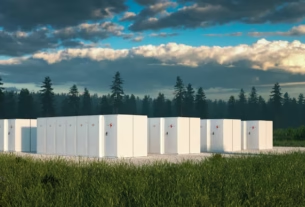In Short : In order to achieve a complete clean energy transition, Jinko ESS replaced diesel generators at the TIJIRIT bottled water factory in Mauritania with an integrated solar-plus-storage system. In off-grid industrial sites, the system integrates 2.15 MWh of SunGiga energy storage with 1.3 MW of Tiger Neo high-efficiency photovoltaic modules, marking a significant advancement in solar energy, renewable resources, and sustainable development.

Market trends and forecasts
High-performance Tiger Neo PV modules and ten SunGiga 215 kWh intelligent energy storage units are used in the system. Tiger Neo’s bifacial design improves solar collection under more than 3,000 hours of sunlight per year, and the storage units, which are rated IP65 for protection against sand erosion and performance even at 55 °C, are made for harsh Saharan conditions.
The increasing need for solar-integrated systems with battery support—which provide more resilience, independence, and lower operating emissions—is reflected in this industrial deployment. In areas where non-renewable resources have historically predominated, it also emphasizes how off-grid solar systems might be monetized.

Impact on Industry and Strategic Platform
TIJIRIT shows how intelligent solar systems that integrate PV modules and storage may power vital manufacturing in remote locations by doing away with the need for diesel generators. In terms of solar system layouts, environmental hardening designs, such as solar system drawings, and operational life, the system establishes a repeatable model for additional off-grid industrial sites.
How Important It Is
This project is a concrete illustration of how battery and solar panel hardware may be modified to create practical solar systems for harsh conditions, promoting sustainable development and reducing carbon emissions in developing nations.
The Final Line
TIJIRIT’s factory is a model for industrial energy transformation thanks to clean infrastructure like Jinko ESS’s solution. These kinds of deployments have the power to affect investor sentiment in solar-related stocks, which might increase the share price of the solar industry as industrial clean energy adoption increases.
Fluence’s robust backlog, which was estimated to be over $4.9 billion as of June 30, 2025, and has since grown by an additional $1.1 billion, translates into substantial revenue visibility and growth potential in 2025. The backlog offers a strong basis for future revenue generation, even if Fluence anticipates falling short of its $2.6–$2.8 billion revenue projection for 2025, mostly as a result of delays in the ramp-up of U.S. manufacturing.




